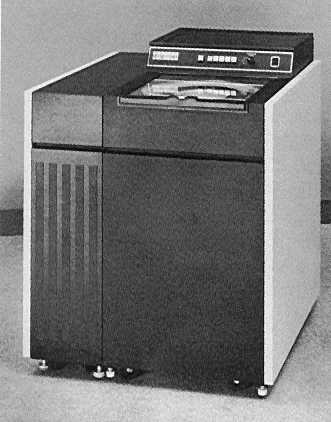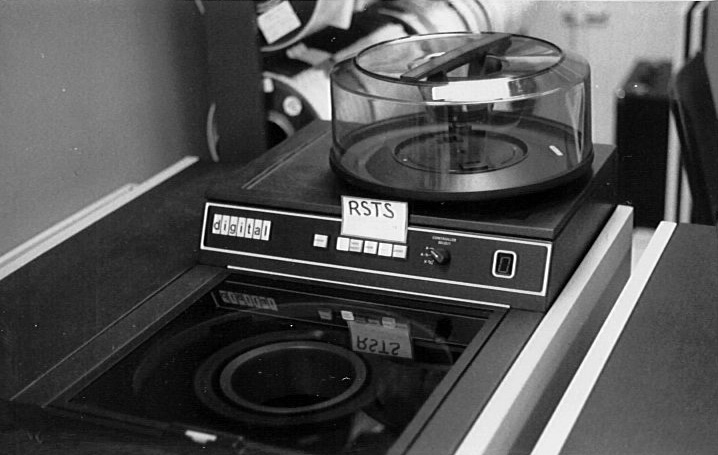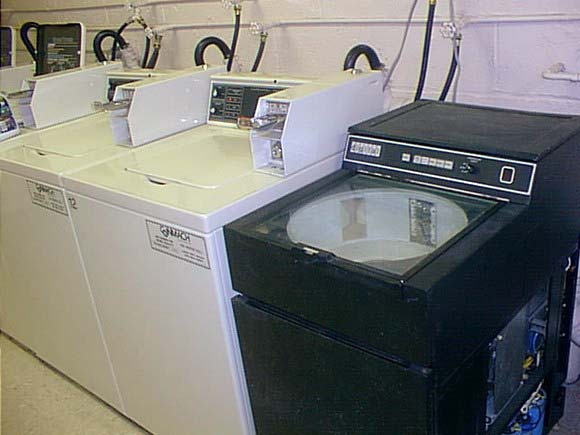The DEC RP04 Disk Drive
Date: 1975. The RP04 is equivalent to the IBM 3330 Mod I. Compare with the later RP06.

Disk Drive Capacity: 20.48 million 36-bit words
(= 92MB) formatted
Peak Transfer Rate: 5.6 microseconds/Word
Access time:
Track-to-track: 7 milliseconds
Average: 28 milliseconds
Maximum: 50 milliseconds
Organization:
128 Words/sector
20 Sectors/track
19 Tracks/cylinder
411 Cylinders/pack
Number of heads: 20
Recording surfaces: 19
Max disks/system: 8
Max drives/controller: 4
Below, the RP04 on our own PDP-11/50 in 1975. As you can see, the disk
packs are removeable. The glass door slides open and the disk is extracted
using the clear plastic round cover, then coupled with the case bottom for
storage. Exposure of disk heads and surfaces to air particles made these
disks much less reliable than today's sealed disks. Also the heads were
relatively massive, and rapidly seeking heads caused considerable vibration,
and sometimes even made the drives "walk" across the floor.

Here's a photo of an RP04 by Gene Hirschel that appeared originally on Techrepublic.com apropos of the well-known phrase "washing-machine size" applied to the disk drives of the 1970s and 80s.
Gene's text:
This is a disk drive, removable platters of storage, each "disk pack" having 20 surfaces. I disassembled this and put it in my dad's station wagon and drove through the Holland Tunnel. In order to get it into my 1 bedroom apartment, I had to take it in the service entrance. When I moved it to my office (where it is today as of 2015) I tied it to my BMW M-3 and towed it up the parking garage ramp from the laundry room.The heads were positioned with an optical sensor that read glass etchings on a plate. Sometimes, the disk pack on one disk drive would not be readable on another identical drive because of head alignment.
Eventually, when the cost and size of computer hardware was reduced significantly, the head and disk drives sealed against dust and contaminates, and famous "head crashes" were reduced dramatically. This sealed disk and head assemble was called a "Winchester" disk. Eventually that term fell out of favor for the easier to type "Hard Disk." The Winchester name came directly from the famous rifle, as IBM announced a 30 Meg removable over a 30 Meg sealed disk (presumably for backups) and called it a "30-30."
So, this is a pre-Winchester "disk drive" posing next to its distant cousins. It sits now in my office as a conversation piece, and as a REALLY BIG paperweight (at 500 lbs, it's great even in a stiff breeze).
